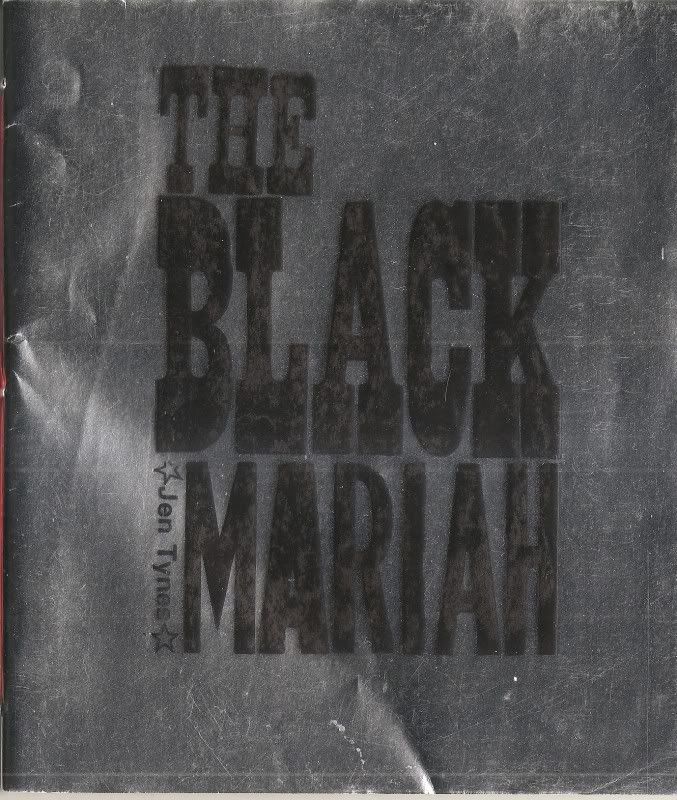
The Black Mariah by Jen Tynes, which will be released by DoubleCross Press at the 2012 AWP, is a longish poem that alternates between sections of standard lineation and sections containing scattered lines that employ the page as an open field. Moreover, the poem focuses on the body and a series of strange transformations it undergoes. Take, for instance, this excerpt from the incipient section:
Where her eyelashes shouldbe: rattlesnakes onfull alarm. Her breasts a couplemushroom clouds, vitalsfull of holes where the red-headed gunslingers missed herapple. It looks like both a womanand a vase inside herpupils.
Rattlesnake eyelashes, mushroom cloud breasts, and pupil vases: the poem creates a new being that is neither one nor the other, but indissolubly both. While some may find such fantastic displacements off-putting, the speaker of these poems (and, by extension, anyone calling themselves a poet) thinks otherwise, saying as much when she states: "My head will not turn / against all the body's forms." In some respects, embracing "all the body's forms," including those of that cross species lines, hearkens back to Horace's The Art of Poetry. In his treatise on verse, the ancient wrote:
Suppose you'd been asked to come for a private viewOf a painting wherein the artist had chosen to joinTo a human head the neck of a horse, and gone onTo collect some odds and ends of arms and legsAnd plaster the surface with feathers of differing colors,So that what began as a lovely woman at the topTapered off into a slimy, discolored fish—Could you keep from laughing, my friends? Believe me, dear Pisos,Paintings like these look a lot like the book of a writerWhose weird conceptions are just like a sick man's dreams,So neither the head not the foot can be made to applyTo a single uniform shape. "But painter and poetsHave always been equally free to try anything."We writers know that, and insist that such license be ours.
Indeed, poets must take "license" to develop in their writing a disparate beast (to develop their writing as a disparate beast) that does not conform to "a single uniform shape," and to do so freely and without fear of the spectators "laughing."
The following "weird conception," originally published in an issue of Anti-, is my favorite of The Black Mariah and brings to bear the transformative capabilities of the poet:
We perform best whenwe listen to the birdinside the bird, dark belliedugly augur song thatlikes to measure us outof space. For demonstrativepurposes the body can affixto any orphan line. My eyes are bulls’eyes, my calves are wet,pliable, the roped-in deathof me. My mother isa fertility trick. We performbest when we admonishour animals forthe gaminess they visitupon our routine. We are not twoof everything ina line, following the colorspectrum. My father is a shadowon the image. I look for a birdinside a bird because it slipsbones out ofeverything I touch.I break the character and lookfor hours like a bodyno one knew to recover.
The "character" embodied within the poem's "I," literally, "breaks" into pieces and is reconfigured in ways that allow the reader to "look [at it] / for hours": constant permutations providing enjoyment for an audience who reveals in displacement and the collage of shapes into new forms.

No comments:
Post a Comment